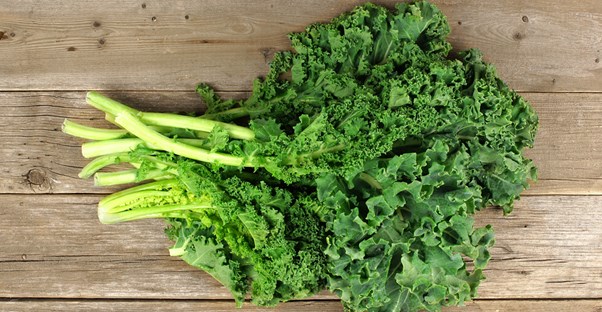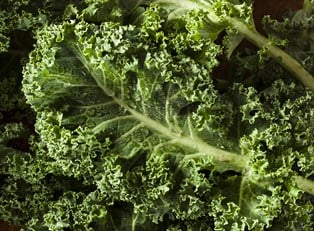Whether it’s raw, blended, sautéed, or in chip form, kale is becoming increasingly popular among America’s health-conscious population. There are many reasons why this leafy green vegetable is good for you. It's high in calcium, which supports strong bones; it's rich in vitamin C, making it a strong immune system booster; it has lots of antioxidants, which help protect against certain types of cancer; it's high in iron, which supports blood and energy levels; and, it's high in fiber, which helps support healthy digestion.
However, it's not all good news when it comes to kale. Even though it may be good for you, there is such thing as too much when it comes to this cruciferous veggie.
Kale Drawbacks
- It can be hard on the digestive system: Raw kale can be especially hard on the digestive system and may lead to bloating, gas, and other abdominal issues. Because of this, try to limit eating kale raw to about twice a week. However, if it is cooked, these problems will not occur.
- It can cause hypothyroidism: Since it is cruciferous, very high levels of kale can cause hypothyroidism. This is because the glucosinolates such as progoitrin found in these types of vegetables can interfere with thyroid hormone synthesis.
- It can cause hyperkalemia: This is a medical condition that occurs when you have high amounts of potassium in your blood. If you are consuming too much kale, hyperkalemia symptoms may include muscle weakness, fatigue, diarrhea, and chest pain.
- It can cause blood clotting: In a one cup serving of kale, there are 547 micrograms of vitamin K, which is over 6 times the daily recommended amount for adults. This vitamin contains proteins that promote clot formation, so if you are having issues with blood clotting or are taking blood thinning medications, eating kale can interfere with this.
- It can provide too much iron: Though this is very rare, kale can provide your body with too much iron. This may lead to symptoms such as headache, weight loss, fatigue, skin color changes, and upset stomach.
Kale Suggestions and Alternatives
There are certain things you can do to avoid most of the negative side effects of eating too much kale. Here are a few suggestions.
- Cook your kale: Most of the risks of kale are more present when it is in its raw form. When kale is cooked, the goitrogenic properties (which can interfere with thyroid function) become dramatically reduced.
- Eat seaweed: Since iodine deficiency can increase the risk of thyroid problems associated with kale, eating seaweed or another iodine-rich food along with it can help.
- Eat brazil nuts: Selenium is found in Brazilian nuts and can also help support healthy iodine levels. Adding a few of these nuts to your kale smoothie can help keep your iodine levels where they should be.
- Vary your greens: Our bodies need many nutrients, so by eating a variety of green vegetables, you are ensuring that you don’t overload on one and skip others that are equally important.



